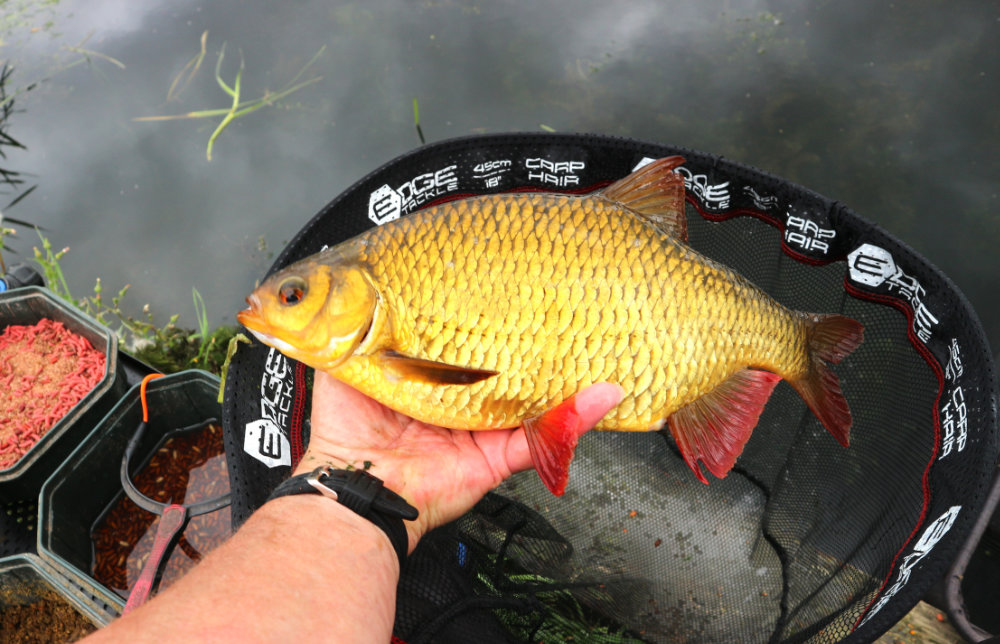Pellet Know How – How to Fish With Pellets
Big Choices
There’s such a massive range of pellet products to choose from it can get confusing, not just concerning the many sizes and colours, but also the flavour options. With so much to take on board, it’s vital to know what each part of the puzzle can do. Feed pellets sink, while the majority of expanders float, excluding one unique version. Some pellets are oily, others not. Certain makes break down faster, while there are also sticky and ground up variations. Closely related dumbbell shaped wafters enter the equation too, being so effective when combined with pellets. Another category concerns ready prepared soft baits, infused with gelatine to make them firm enough to hook directly. Pellet based groundbaits are important as well, needing to match up with feed and hook choices. With such a lot to absorb, here’s a guide to keep things as simplified as possible.
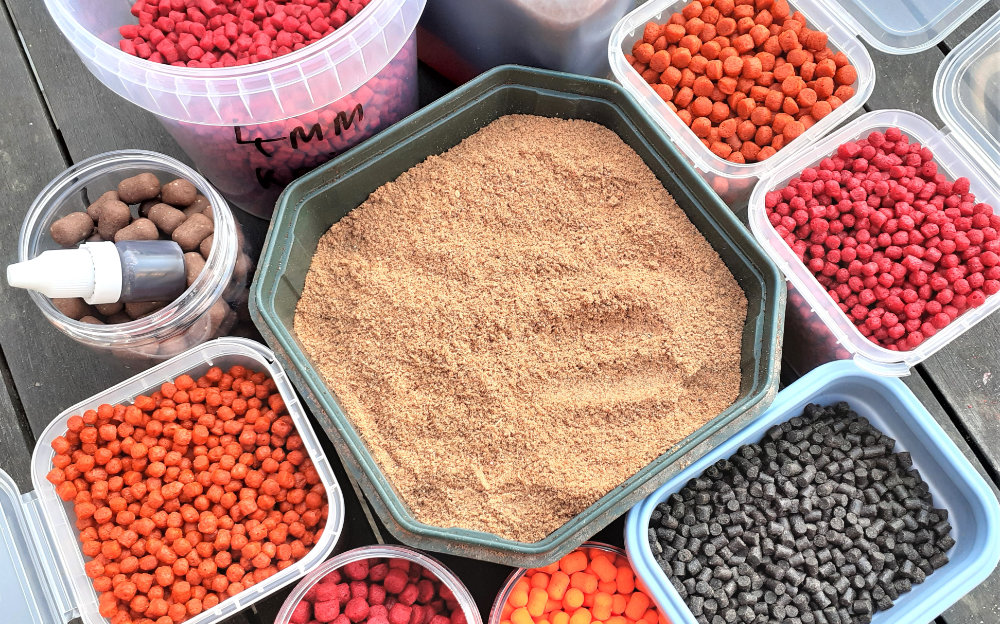
Basic Combo
An easy way of using pellets is combining the sinking feed variety with soft hookers – the type available from tackle shops in small plastic pots. Feed pellets are hard and heavy, so they sink, while hookers are soft, light and often buoyant. This makes the latter perfect, as their name suggests, for direct hooking. Armed with a packet of feed pellets and a pot of hookers, it’s possible to catch fish on many different venues, not just carp puddles. Cracking samples like these bream and tench came from a canal, catapulting out 4mm feed pellets, using a similar size and colour hook version. Darker colours help to avoid teeming shoals of small stuff, which can make conventional baits like maggots, casters and worms a waste of time. Pellets have a knack of attracting better quality fish, but patience is needed because they rarely produce straight away, particularly on wilder venues.
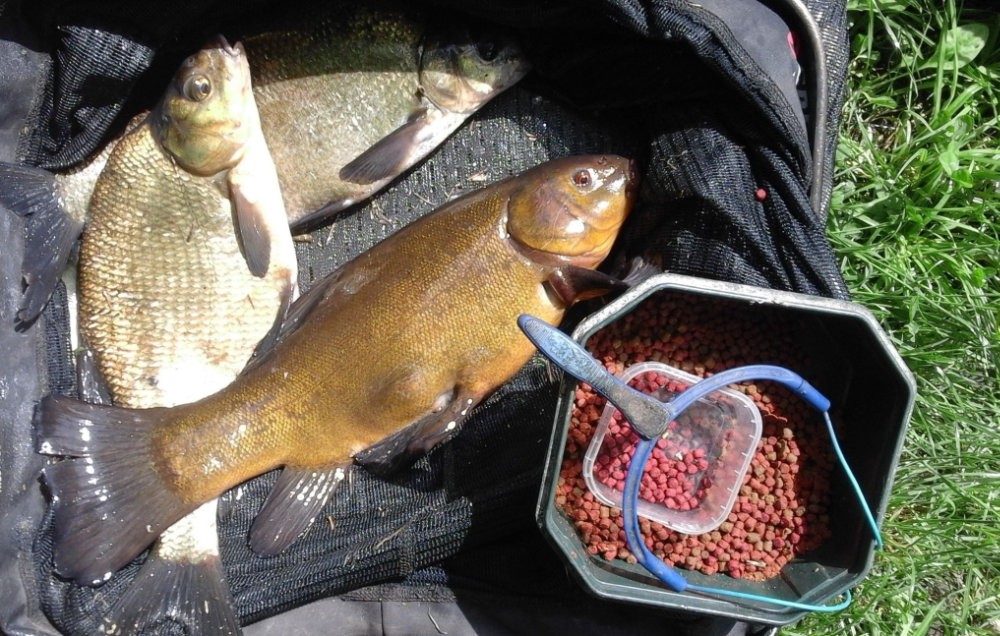
Hook Pellets
Although there are plenty of choices of ready prepared hook pellets, some are too soft and turn into an unusable mush once their container is opened. It’s wise to be picky and in my experience the best two products are Drennan Yum Yums and Dynamite Durable Hookers. Both types offer a good selection of flavours, colours and sizes, giving enough choice to be able to find closely related feed pellets and groundbaits. Apart from pole fishing, premium hook pellets are robust enough to use with waggler or feeder tackle, which offers useful reserve options. Pots of these ready to use baits keep for ages, providing you don’t let them get wet or roasted by the sun. But having said that, dodgy hooker pellets can be improved by leaving them exposed to the elements for a while. If they are too soft this helps them to harden up, while if they are too big, they dry out and shrink.
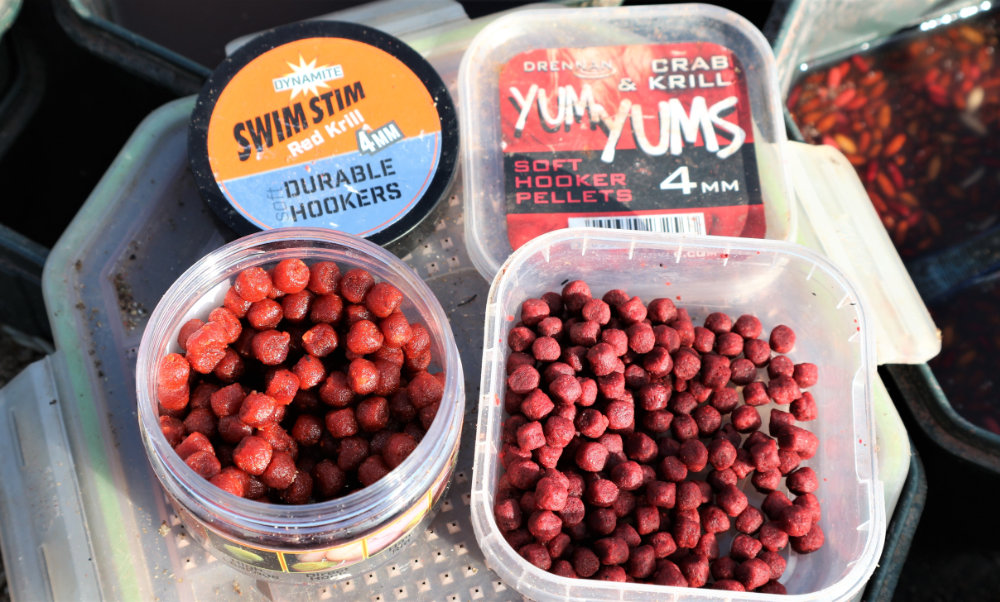
Expanders
The majority of expander pellets float after being soaked in water, apart from Sonu Baits unusual Pro products, which don’t require any pumping to make them sink. With normal expanders you need a pellet pump to properly infuse them with enough moisture to cut through the surface and get down to the deck. Even then, treated expanders need to be looked after to keep them in a sinking state, carefully storing them in airtight containers or sealed plastic bags. It’s extra hassle but worth it. Being super soft and yet capable of staying on the hook, expanders are extremely effective at gaining plenty of bites on difficult and heavily fished venues. They are particularly suited for cold water carp and F1s, while skimmers, hybrids and tench love them too. Soaking expanders with the run-off water after preparing flavoured feed pellets, infuses them with the same colour and aroma.
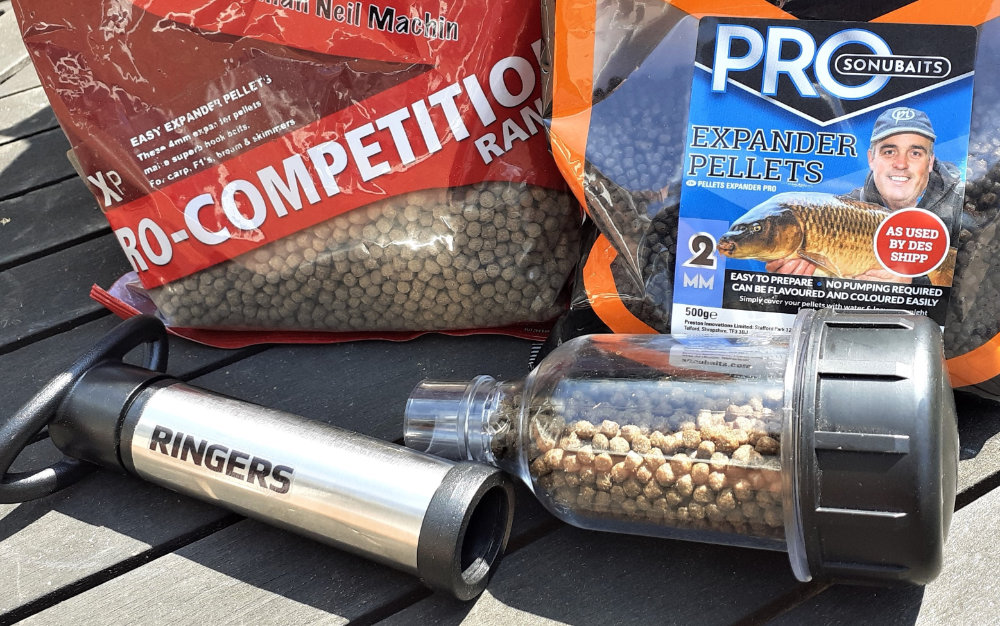
Top Tips
Hollow tip pole floats combine well with pellets, such as the Edge C Series and some of the Edge N Series floats, which offer different thicknesses. This allows you to choose just the right buoyancy to support the bait size, bearing in mind pellets absorb extra water when submerged and can sink solid tipped floats. Hollow tips also allow you to dot them right down, so their bodies are well below the surface tension. This helps to highlight delicate bites much better. Being translucent, hollow tips are easier to see in awkward light and against tricky reflections. They are so effective, I also use thicker diameters with stick floats and insert wagglers, having converted many of my favourite and most used models over the years. The Edge N5 Floats in the photograph have 1.5mm hollow tips, which are ideal for use with 4mm to 6mm pellets, combined with either olivette or strung micro shot formats.
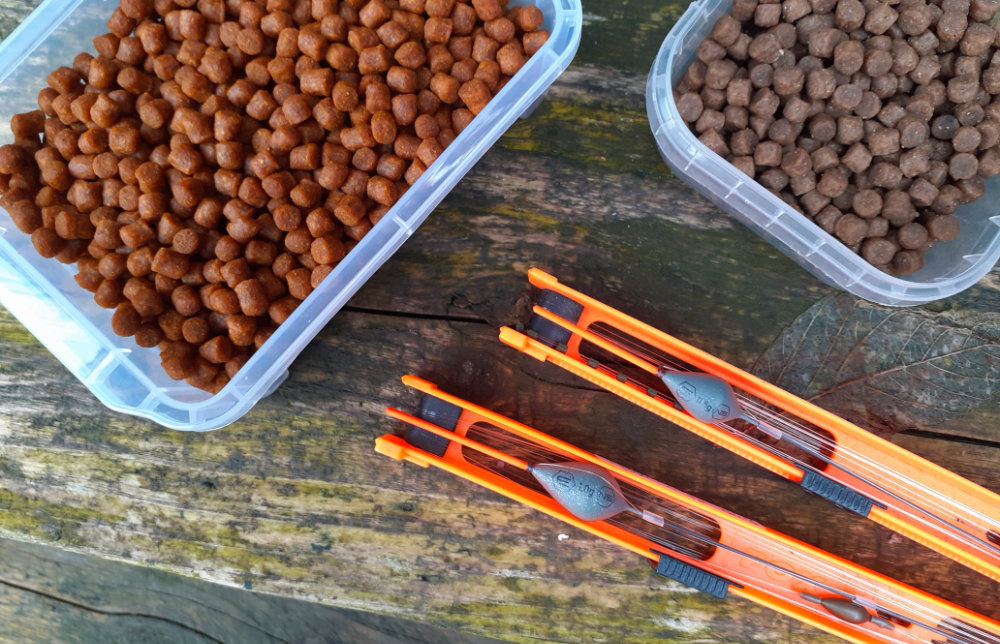
Banding Up
Hard pellets come in useful as hook baits when there are lots of small fish to contend with and for big fish bagging sessions. They are far more robust than expanders or similar hooker variations, being capable of withstanding plenty of knocks from bits, alongside vigorous casting with feeder and running line float gear. There are two ways of banding hard pellets, either having a latex band installed on a loop hair-rig style or installing banded baits directly. The loop mode makes the bait behave in a more flexible manner, which helps to fool cagey big fish. Directly hooking ready banded pellets or buoyant wafters is faster, not making much difference when sport is hectic. Latex bands are best because they are very stretchy, allowing surprisingly small sizes to be installed on hard baits, so they are barely noticeable. A decent pellet bander tool is needed to do this.
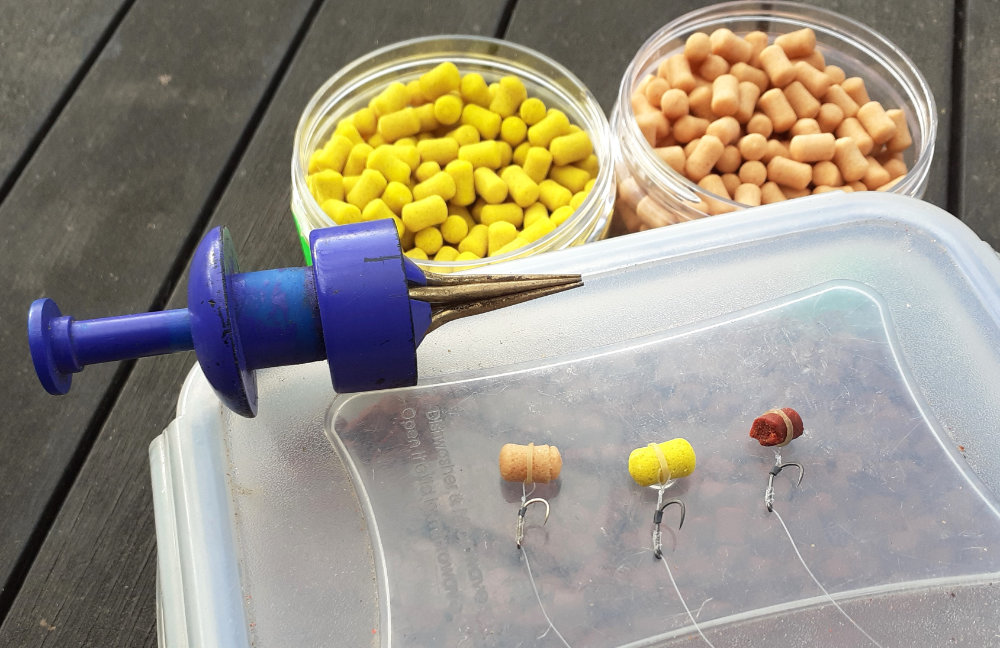
Feed Pellets
Feed pellets come in many sizes, from micros up to big mouthfuls aimed at specimen fish. 1mm and 2mm micros are very popular and are just as effective as groundbait, particularly useful for venues where the latter isn’t allowed. But even when groundbait can be used, adding micros helps make it more effective and hold fish for longer. Tiny feed pellets in small amounts, pull and hold carp, bream and tench for long periods. They can also be used in similar fashion to hemp, for targeting river species like chub and barbel. When wetted correctly, normal micros and sticky versions anchor well to in-line feeders and can pull bites all day long. Combining them with small amounts of hook baits like maggots, larger hard pellets, or a pot of mixed wafters, makes for a cheap bait menu. Feed pellets from 4mm upwards are easy to use with a catapult and work everywhere.
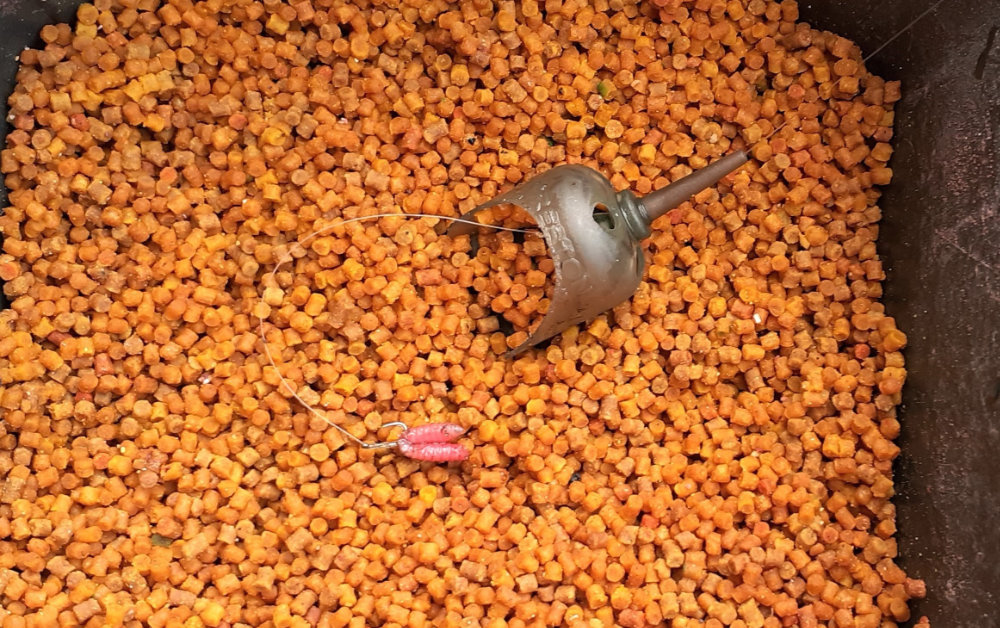
Stand Outs
Using hook baits that tie in closely with the pellets or groundbait being fed seems a logical step, but not always. Having something completely different attached to your hook, standing out like a sore thumb, can be even more effective. Fish are inquisitive creatures and super bright hook offerings are often snaffled up instantly. White and fluoro colours are immensely popular, which underlines the fact they work. Whether fish home in on something bright, or simply suck it in because it has a pile of feed around it, is difficult to figure out. But it’s a fact that highly visible pop-up hook offerings are incredibly effective. If a buoyant wafter or boilie is presented on top of a pile of bait around a method feeder, it’s the first thing feeding fish will meet and is likely to be eaten. Lightweight offerings like this easily stir up off the bottom, which attracts attention.
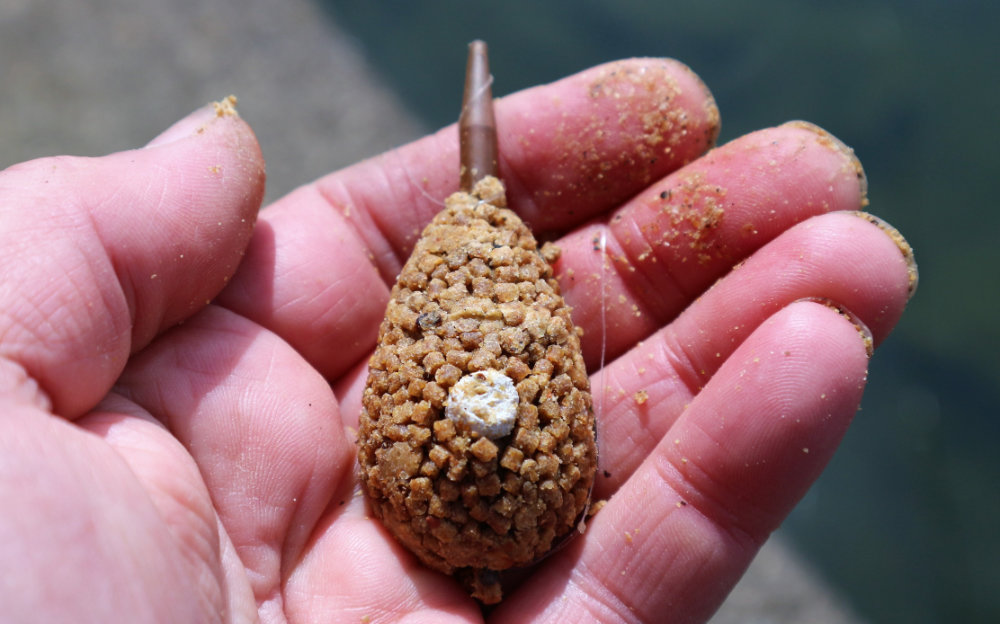
Working Together
In similar fashion to the way particles like cooked hemp are a great fish attractor, feed pellets can be used to do a similar job, working well in combination with natural baits like maggots or casters. On many venues this gives you the best of both worlds, helping to catch a greater span of species. Pre-soaked 2mm sinking expander pellets or hard 3mm feed pellets, catapult the same distance as casters or maggots. Either can be used to get a good bed of bait down to help hold fish for long periods when using pole, bomb or waggler tackle. Very often maggots or casters will score first on the hook, but later in sessions, soft or banded hard pellets become effective too. The latter can pull much bigger fish as swims are carefully built up with regular feeding, not just carp but also bream and tench. This applies to both commercial and wild fisheries, including rivers in some cases.
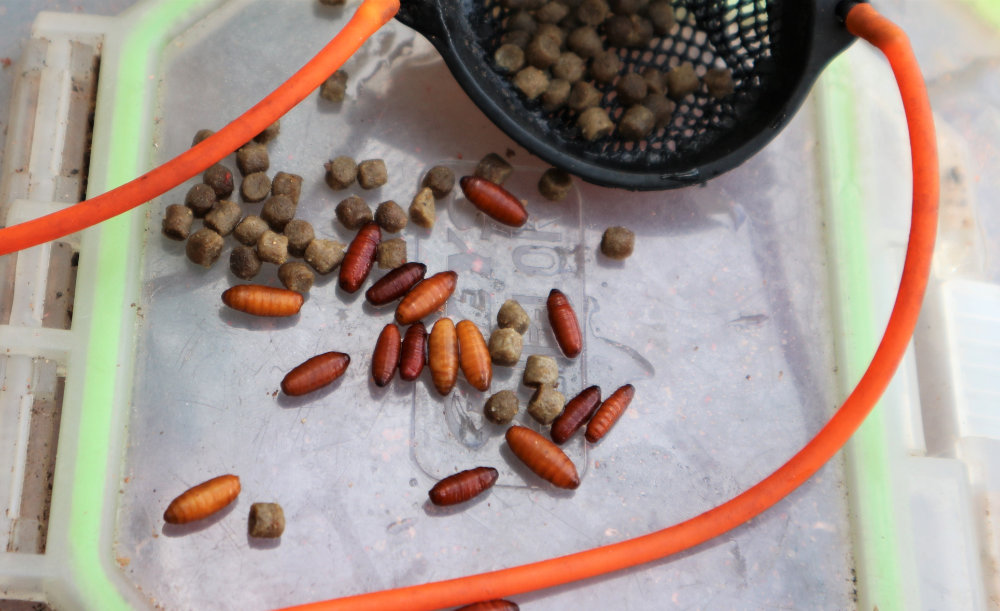
Groundbait Booster
Because micro pellets are so good at holding fish for long periods, adding them to groundbait mixes makes sense. Before the pellet era, anglers used to make groundbait more potent by putting squatts or hemp in it, but nowadays micros do a similar job. Being so small allows plenty to be fed, which keeps fish grazing over them for ages. Small flecks of bright colours make darker groundbaits more attractive, particularly in deep water. Micros work best if you add them dry to groundbait mixes on the bank, because they won’t then affect its consistency, while wet pellets can make your feed go stodgy. Species like skimmers and carp like hard crunchy micros anyway. Due to this, it’s best to add them in small quantities as sessions evolve, helping to make sure swims are not overfed. Although micros are often used neat in pellet feeders, adding some groundbait can stir up even more action.
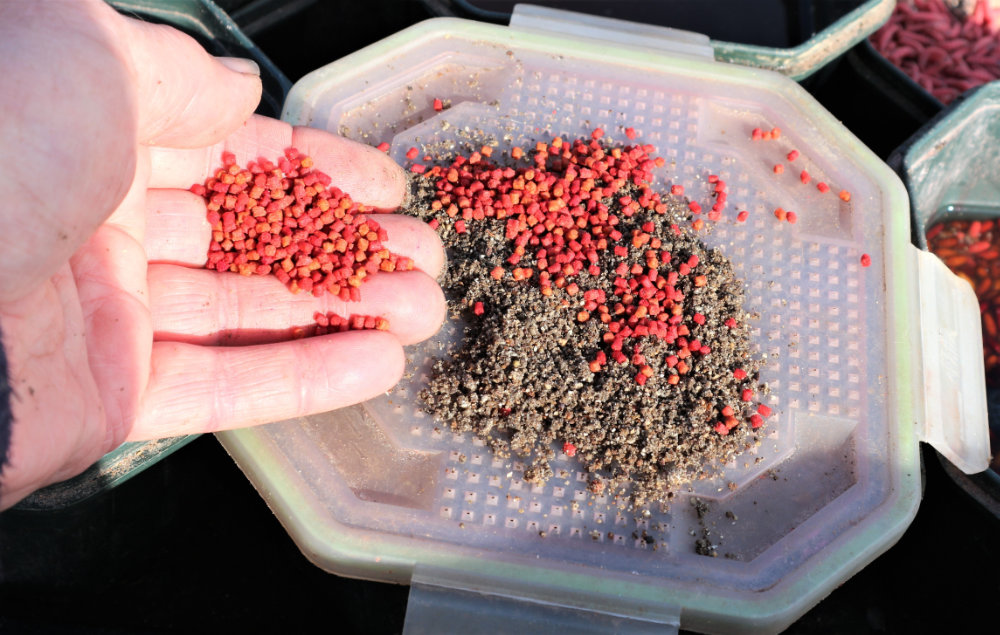
New Territory
Pellets were originally most effective on carp orientated fisheries, but because their use has become so widespread, they work just about everywhere now. As previously highlighted, they can unearth bigger canal fish, while not being out of place on natural lakes, gravel pits or reservoirs. It’s a bait always worth a go on drains, especially those that hold lots of small fish, providing a route to get through to any bigger bream and tench that might be resident. Pellets work on rivers too, thanks to specimen anglers using them regularly for big barbel. Running water chub and bream have grown to love them, where once again this bait helps to get through nuisance small fish, such as minnows and bleak. At a time when favourite river baits like maggots and casters were being mauled to bits, this simple pellet feeder, crammed with different sizes of meaty flavoured bait, caught monster chub.
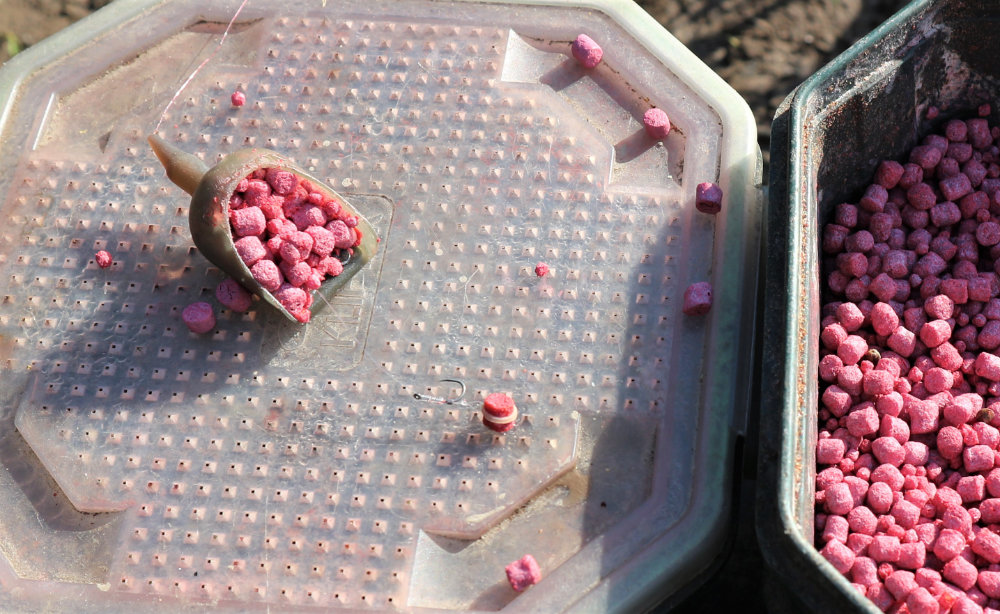
SURPRISE RESULTS (Pic 12)
Always having some pellets with you is sensible, because you never know when they might come in handy. In the depths of fenland, where it’s doubtful a bait like this had ever been seen by the inhabitants before, they resulted in a catch of beautiful big rudd like this one. A change of direction was caused by many small fish, snaffling up baits like maggots and casters before anything else could get a look in. Buying a few extra seconds by getting banded hard pellets through the nuisance stuff worked wonders. All it needed was a quarter bag of basic 4mm hard feed pellets to change a bad day into a red letter one. Other species like roach and skimmers soon took a liking to this bait as well, which was simply fished with waggler tackle over towards far bank rush cover. Pellets also scored on other drain outings when using pole tackle, finding plenty of bream and good-sized tench.
